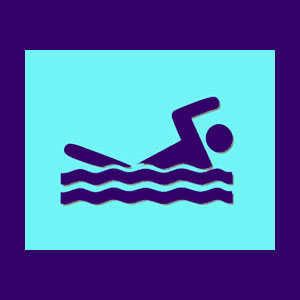
Scoliosis exercises are often prescribed to diagnosed patients as part of a combined care approach to treating abnormal and possibly pathological spinal curvature.
Back exercises are a valuable addition to a health maintenance routine, but will not correct or halt the progress of scoliosis. Patients are advised to know the facts of their diagnosed condition and just what type of effects any proposed treatment will have on their present and future symptomatic expressions. In some instances, a patient may be deluded into believing that exercises will actually help to cure them. This can occur do to poor communication between caregiver and patient, misunderstanding of advice rendered, assumption of curative ability imparted or purposeful deceit used to secure a new customer for a medical or physical therapy practice.
This discussion helps patients to better comprehend the value of exercise therapy for scoliotic curvatures of the spine.
Scoliosis Exercise Therapy
Although exercise will do nothing to stop or reverse a spinal curvature, physical activity is still highly recommended for almost all scoliosis patients. Exercise is good for the body in general and specific exercises will help to stretch and strengthen back muscles. Strong back muscles are helpful in providing support for a curved spine. Exercise is also prescribed to maintain flexibility and mobility in affected areas of the spine, as well as the entire body.
Since physical therapy is very costly, some patients might be best served working with a personal fitness trainer to help them develop exercise plans which can be self-managed far into the future. Patients who become actively involved in their own scoliosis treatment statistically fare better and will also benefit in many ways from participation in ongoing exercise therapy.
Patients may use specific calisthenics and resistance training or might instead choose an activity-related pastime, such as swimming, yoga, Pilates or tai chi.
Scoliosis Exercises Routine
Functional patients can often do exercises and back stretches alone, at home. Patients with a severe spinal curvature might require the assistance of a professional physical therapist or certified personal trainer. Regardless of your functionality, it is crucial to do exercises with good form and proper technique to avoid the risk of injury.
Take an active role in your treatment by informing your doctor or therapist of any preferences or interests you have, so that they might design an interesting and challenging custom exercise program just for your specific needs. It is a good idea to remind your doctor about exercises you may be doing regularly. This way, they can continue to advise you if changes occur in your condition which may warrant alterations in your normal fitness routine.
Exercises for Scoliosis
Do not be misled by therapists claiming that exercise will do anything at all to cure or reverse your scoliosis condition. It will not. However, give exercise a chance to improve your flexibility, muscular strength and overall health and you will surely see benefits.
It is often better to participate in an exercise-based activity, rather than doing simple calisthenics. As a fitness professional and martial arts instructor, I have seen the benefits of a well designed exercise program for the treatment of many varieties of back and spinal conditions, including scoliosis.
Two highly recommended forms of exercise for patients of all ages and abilities are yoga and tai chi. I can also personally recommend swimming as a great activity for people with back or neck pain, since it reduces impact and gravity, providing a safe and extremely relaxing form of exercise for those with even the worst symptoms. Swimming has been a real savior to me as I have gotten older.
Consult with your doctor before beginning any program of exercise for scoliosis.





